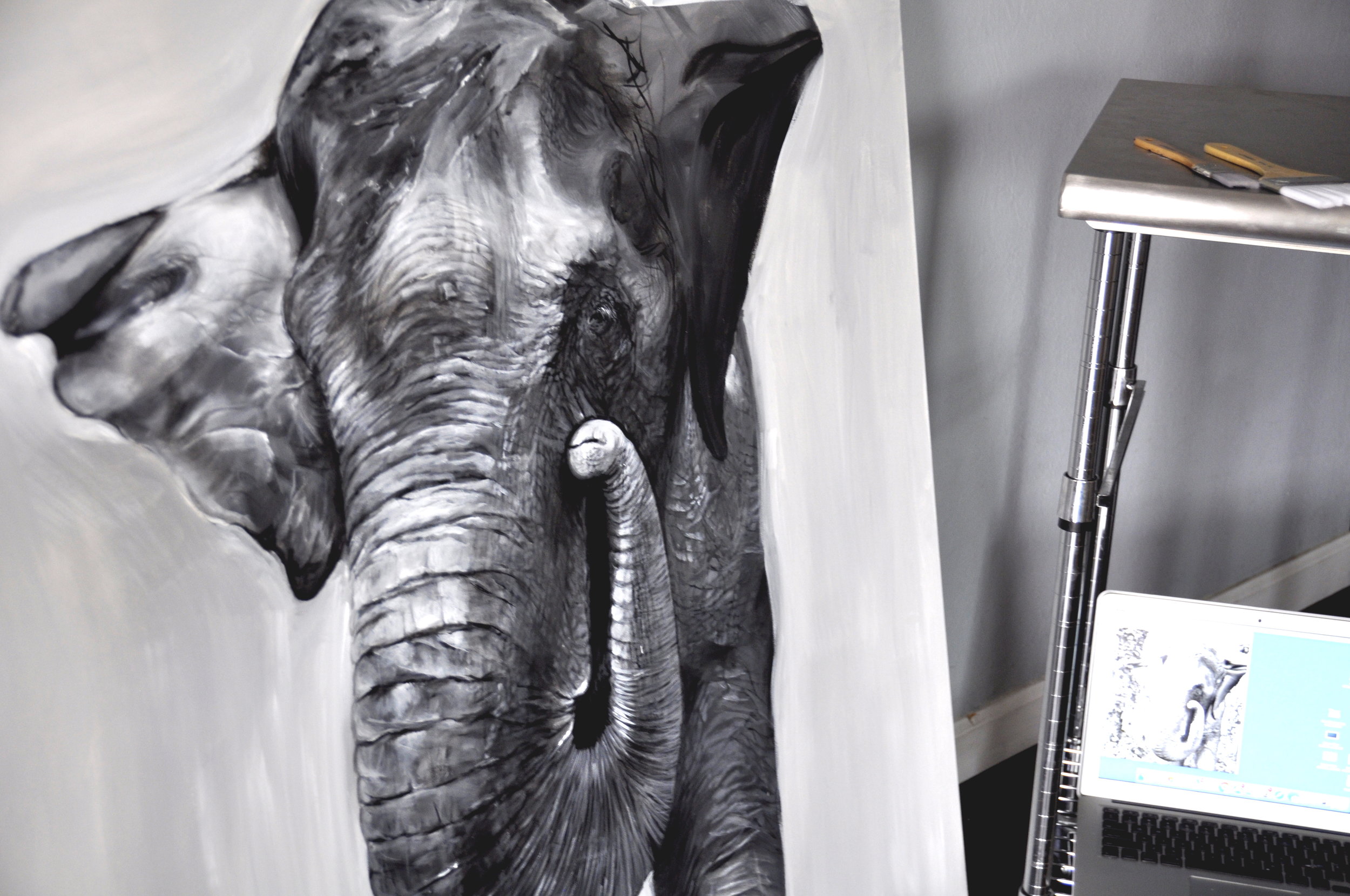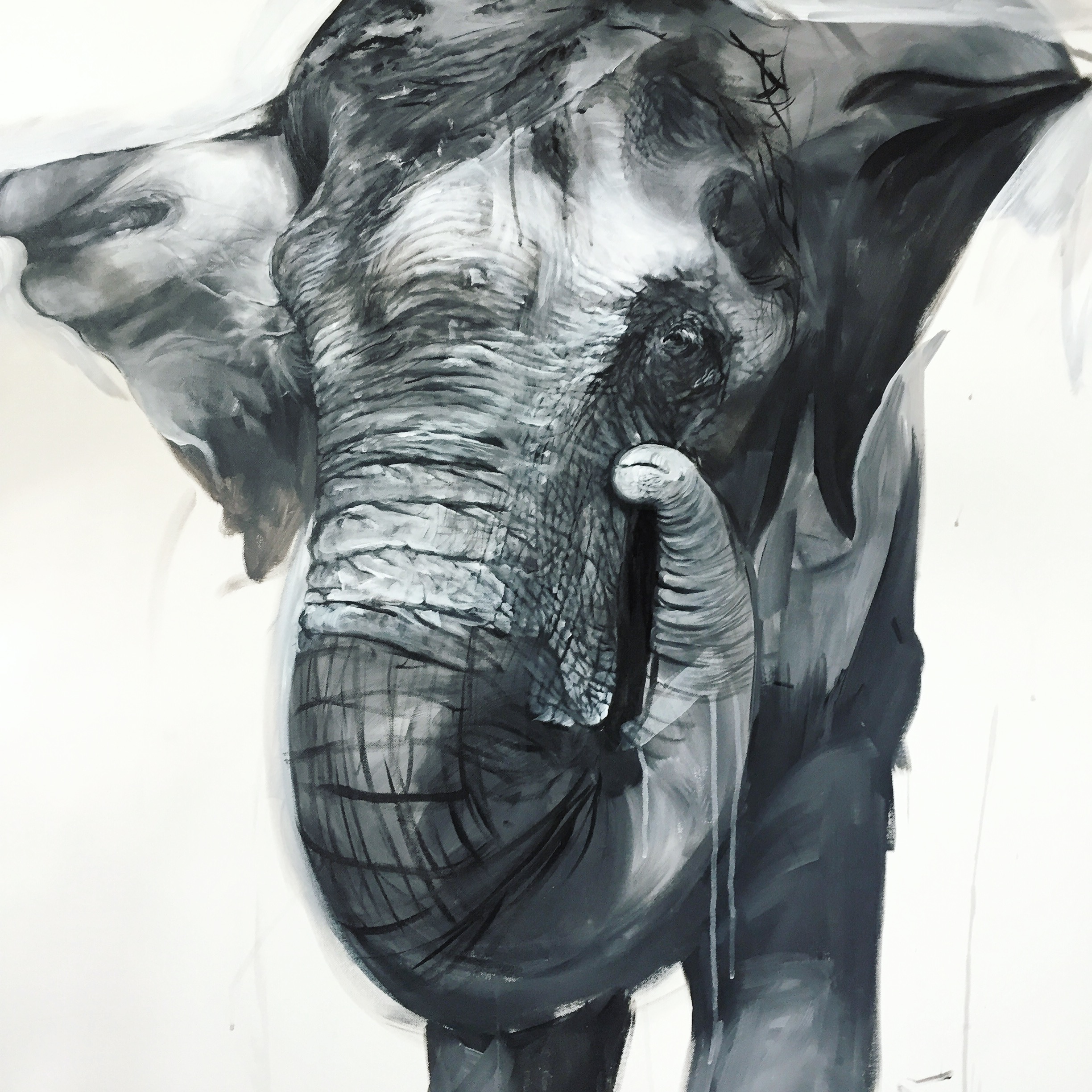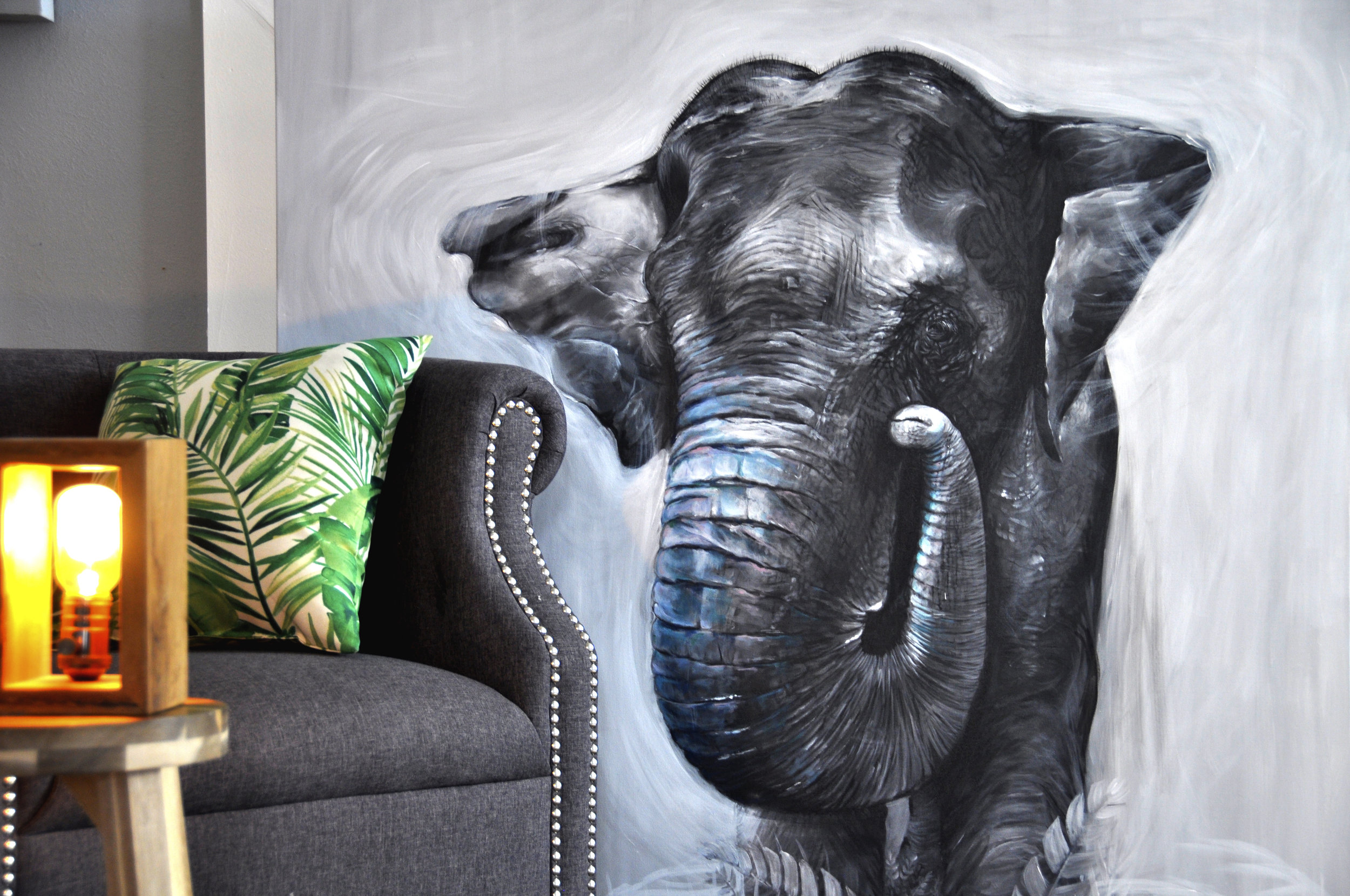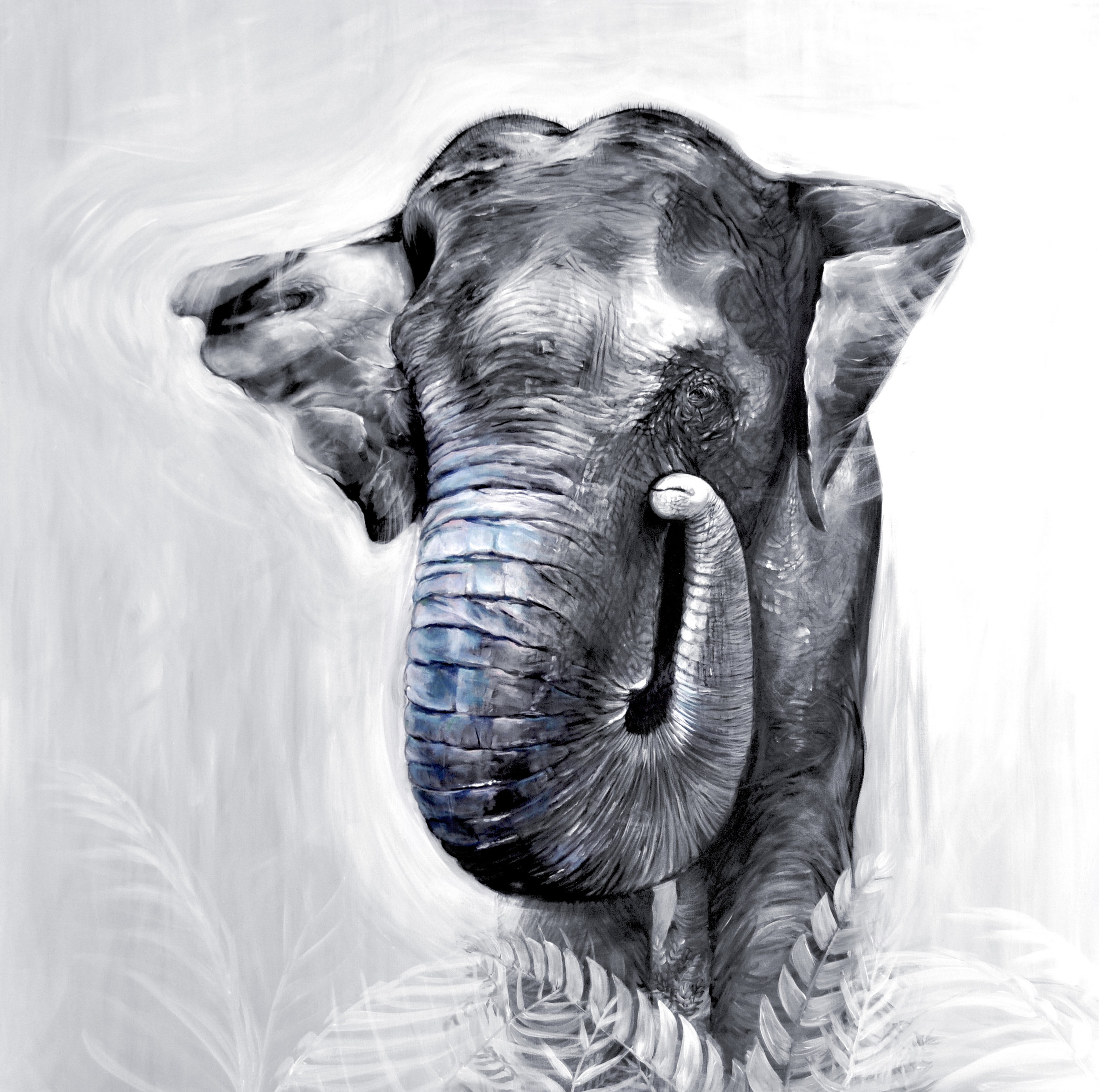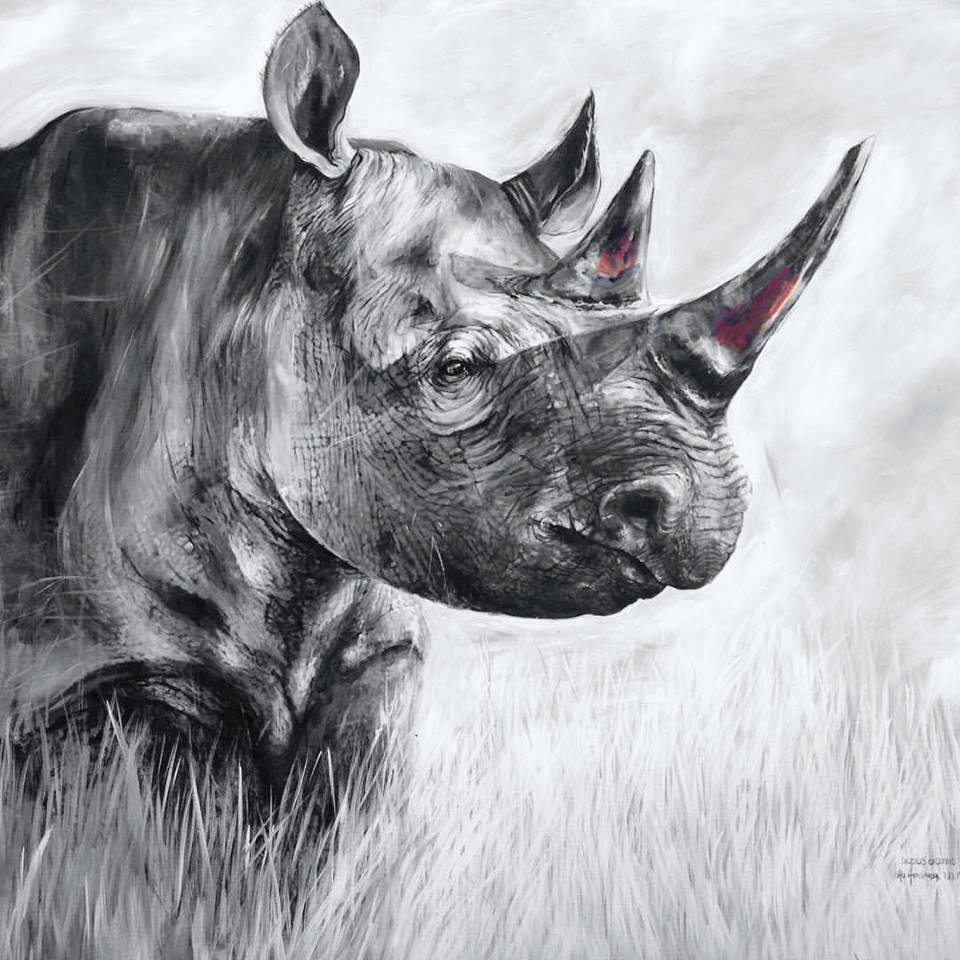*SOLD | 48x48. Gallery wrapped acrylic painting of the critically endangered Black Rhino. (LEFT)
10% of this sale went to WildAid and their fight against the illegal wildlife trade. *prints available
*SOLD | 36x48. Gallery wrapped acrylic painting of the critically endangered Black Rhino. (RIGHT)
10% of this sale went to the International Rhino Foundation and their fight for saving Rhinos across the world.
The Black Rhino
Conservation status: Critically endangered
Location: Southern and eastern Africa, including: Kenya, Tanzania, Namibia, South Africa and Zimbabwe
Population: 5,000 – 5,400
Major threats: Illegal poaching - (The illegal wildlife trade of horns, tusks and body parts is 20 billion dollar industry. The rhino horn is often used in traditional Chinese medicine. It is ground to a powder and ingested as a treatment for everything from cancer to sea snake bites and hangovers. )
Between 1970 and 1992, the population of this species decreased by 96%. Since then Intensive Anti-poaching efforts have been made. We've seen great results since 1996. The population is now between 5,042 – 5,455 in the wild.
How are we helping?
10% of the sale will go to the International Rhino Foundation and their program for black rhinos. The Zimbabwe Lowveld Rhino Program is protecting and growing Zimbabwe’s largest population of black rhinos through monitoring and anti-poaching efforts, combined with treating, rehabilitating and translocating rhinos as needed.
Fun Facts :
How can you tell the difference between the black and white rhino? Their mouth. Black rhinos have a pointed lip. This helps them pick fruit from branches and select leaves from twigs. White rhinos graze on grasses so they have a flat, wide lip.
CITES: Appendix I
https://www.savetherhino.org/rhino_info/species_of_rhino/black_rhinos/black_rhino_factfile
http://www.nationalgeographic.com/animals/mammals/b/black-rhinoceros/
http://rhinos.org/species/black-rhino/


